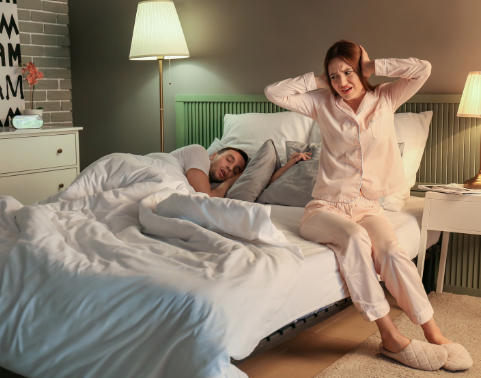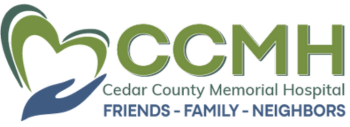
photo of a couple in bed, the man is asleep and snoring, the woman is awake, frustrated with hands over her ears
Understanding Sleep Apnea: Diagnosis and Treatment
Sleep apnea affects millions of people worldwide, yet many remain unaware they have this potentially serious condition. Understanding what sleep apnea is, how it's diagnosed, and the available treatment options can be the first step toward better sleep and improved health.
What Is Sleep Apnea?
Sleep apnea is a condition where breathing repeatedly stops and restarts during sleep, preventing the body from getting adequate oxygen. Each breathing pause can last from several seconds to minutes and may occur many times throughout the night. These interruptions fragment sleep and prevent restorative rest, even when someone appears to sleep for a full eight hours.There are three main types of sleep apnea. Obstructive sleep apnea (OSA) occurs when throat muscles relax during sleep, causing surrounding tissue to block the airway. This is the most common form, affecting an estimated 30 million adults in the United States. Central sleep apnea (CSA) happens when the brain fails to send proper signals to breathing muscles. The third type, mixed or complex sleep apnea, combines elements of both.
Common symptoms include loud snoring, gasping or choking sounds during sleep, excessive daytime sleepiness, and waking feeling unrested despite adequate sleep time. Many people with sleep apnea are unaware of their nighttime breathing problems, with symptoms often first noticed by a sleeping partner.
How Sleep Apnea Is Diagnosed
Diagnosis typically begins with a medical evaluation. Healthcare providers assess symptoms, medical history, and risk factors such as obesity, large neck circumference, or family history of sleep disorders. Physical examination may reveal indicators like a crowded airway, enlarged tonsils, or specific jaw characteristics.A sleep study, or Polysomnography (PSG), is considered the gold standard for diagnosing sleep-related breathing disorders. This comprehensive overnight test, conducted in a sleep laboratory, uses multiple sensors to monitor brain waves, eye movements, muscle activity, heart rate, breathing patterns, and oxygen levels throughout the night. Trained specialists analyze this data to determine if sleep apnea is present and assess its severity.
For suspected obstructive sleep apnea cases, home sleep testing has become an increasingly common alternative. These portable devices measure breathing, oxygen levels, and sometimes heart rate while patients sleep in their own homes. Home tests are generally appropriate for those with moderate to severe OSA symptoms without other complicating health conditions. While convenient and less expensive than laboratory studies, home tests provide less comprehensive data than full polysomnography.
The severity of sleep apnea is measured using the apnea-hypopnea index (AHI), which counts breathing disruptions per hour of sleep. Diagnosis is typically confirmed when the AHI exceeds five events per hour along with daytime symptoms, or fifteen or more events per hour regardless of symptoms.
Treatment Options
Treatment approaches vary based on sleep apnea type and severity. For mild cases, lifestyle modifications may suffice, including weight loss, avoiding alcohol before bedtime, sleeping on one's side rather than back, and treating nasal congestion.Continuous positive airway pressure (CPAP) is the most common and effective treatment for obstructive sleep apnea. A CPAP machine delivers steady pressurized air through a mask worn during sleep, keeping the airway open and preventing breathing interruptions. While highly effective, some patients find CPAP uncomfortable or difficult to use consistently. There are many different kinds of CPAP machines and masks. Be sure to tell your doctor if you're not happy with the type you're using. He or she may suggest switching to a different kind that may work better for you.
For those who cannot tolerate CPAP or have mild to moderate OSA, oral appliances offer an alternative. These custom-fitted devices, similar to mouthguards, reposition the lower jaw or tongue to keep the airway open during sleep. Mandibular advancement devices are the most common type, moving the jaw forward to increase airway space. Oral appliances are more portable and quieter than CPAP machines, though they may cause temporary jaw discomfort or tooth sensitivity.
Surgical options may be considered when other treatments prove ineffective. Procedures range from removing excess throat tissue or enlarged tonsils to more complex surgeries that reposition jaw structures. Hypoglossal nerve stimulation, a newer approach, uses an implanted device to stimulate nerves controlling tongue muscles, preventing airway blockage during sleep.
The Importance of Treatment
Untreated sleep apnea extends beyond poor sleep quality. The condition significantly increases risks for cardiovascular problems including high blood pressure, heart disease, stroke, and irregular heart rhythms. It can also contribute to type 2 diabetes, cognitive impairment, and dangerous daytime drowsiness that raises accident risks.The good news is that effective treatment can dramatically improve quality of life. Patients often report better energy levels, improved concentration, reduced snoring, and better overall health. Working with sleep specialists, dentists, and other healthcare providers helps ensure proper diagnosis and selection of the most appropriate treatment approach for each individual's needs and circumstances.
If you experience persistent snoring, daytime fatigue despite adequate sleep time, or witnessed breathing pauses during sleep, consulting a healthcare provider about sleep apnea evaluation is an important step toward protecting your health and reclaiming restful sleep.
To learn about the Sleep Lab at CCMH, click here.
